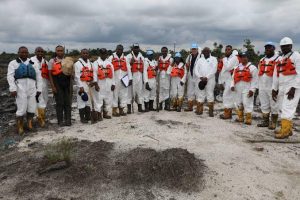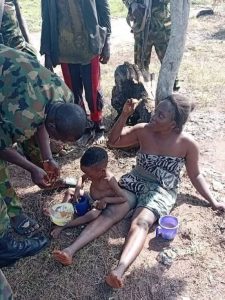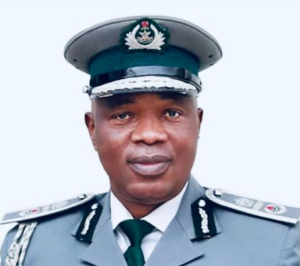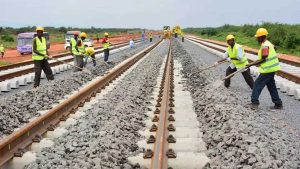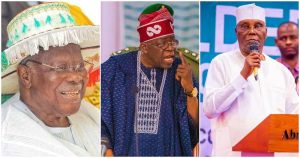
...A Land of Pain and Promise
By Amieyeofori Ibim
The Ogoni people of Rivers State are no strangers to suffering. Their name has become shorthand for environmental devastation and resistance in Nigeria’s troubled oil-rich Niger Delta. What was once a land of lush farmlands and thriving rivers has become an emblem of betrayal.

For decades, Ogoni communities bore the brunt of oil exploration: poisoned rivers, unproductive soil, and air thick with soot from gas flares. Their cries went largely unheard until the 1990s, when the Movement for the Survival of the Ogoni People (MOSOP) and its leader, Ken Saro-Wiwa, forced the world to pay attention. Today, long after his execution in 1995, the agonies he described remain visible.
When the Hydrocarbon Pollution Remediation Project (HYPREP) was launched in 2016, it carried the weight of redemption. It was the federal government’s response to the 2011 United Nations Environment Programme (UNEP) report, which concluded that Ogoni land was one of the most polluted regions on earth. The report warned that restoring the environment would take at least 25 to 30 years — but it also stressed that urgent action was needed immediately.
The announcement of HYPREP ignited hope. After years of activism, jailings, and even deaths, here was a chance for genuine healing. Communities dreamed of drinking clean water again, of planting crops without fear, of casting nets into rivers teeming with fish.
But nearly a decade later, many Ogonis feel abandoned once more. Remediation sites, meant to be symbols of renewal, often lie unfinished. Locals complain of contractors arriving with fanfare only to disappear months later. Farmers still watch their crops wither, and women still trek long distances for safe water.
“They told us HYPREP would save us,” one elder in Bodo community lamented, “but we are still drinking poison.” His words capture the bitter irony of a project designed to heal but now seen as prolonging suffering.
To grasp the depth of the pain, it is important to remember what came before. Ogoni land was once a picture of abundance. Its fertile soil produced cassava, yams, and vegetables in generous supply. Its rivers, dotted with mangroves, offered fishermen baskets of tilapia, catfish, and shellfish. Oral traditions and proverbs celebrated the bond between people and nature. That bond was broken when oil exploration began in the 1950s. What should have been a blessing quickly became a curse.
By the 1970s and 1980s, the first major oil spills left fields coated in crude. Gas flares lit up the night sky, destroying crops and damaging lungs. The once-proud Ogoni rivers shimmered not with fish but with oil slicks. By the 1990s, survival was a daily struggle.
Ken Saro-Wiwa captured this tragedy with searing clarity, calling it an “ecological war.” He accused the state and multinational companies of committing environmental genocide. His execution, alongside eight other activists in 1995, cemented Ogoni’s place in history as both victim and symbol of resistance.
Sixteen years later, the UNEP report put numbers and evidence to what the people had long known. It found benzene, a known carcinogen, in drinking water at levels 900 times above World Health Organization standards. It described farmland poisoned beyond use and recommended emergency measures, especially the provision of safe drinking water.
The report shocked the world. But for the Ogoni people, it was simply official recognition of what they had endured for decades.
HYPREP was created to implement the UNEP recommendations. Its mission was straightforward: clean up contaminated sites, provide potable water, restore livelihoods, and return dignity to a wounded land. But execution has been slow and controversial.
Critics allege that contracts were awarded to inexperienced firms. Many projects remain stalled or incomplete. Water provision — a central demand — is still a dream for too many villages. And while billions have been allocated, communities say they see little change in their daily lives.
In K-Dere and Bodo, families fetch water from boreholes they fear may still be contaminated. Some rely on sachet water sold at prices they cannot sustain. Farmers plant in soil they suspect is still poisoned. Fishermen mend nets they rarely use, as rivers no longer yield their daily bread.
The health toll is heavy. Locals complain of strange skin rashes, miscarriages, and persistent respiratory illnesses. Yet studies are limited, and many live without medical answers.
For women, the burden is especially harsh. They shoulder the task of finding safe water, cooking food from depleted farms, and nursing sick children. For youths, the lack of opportunity drives frustration. With few prospects in agriculture or fishing, many migrate to cities or drift toward militancy. The cycle is one of despair: contaminated environment, weakened livelihoods, rising poverty, and dashed hopes.
Officials at HYPREP insist progress is being made. They highlight completed remediation projects, ongoing water schemes, and training programs designed to equip youths with new skills. Scholarships, job opportunities, and livelihood initiatives are also listed as successes. But on the ground, these achievements often feel tokenistic. Community members ask why, after nearly a decade, they still cannot trust the water they drink or the soil they till.
Environmental groups and activists have become louder in their criticism. They accuse HYPREP of lacking transparency and failing to engage communities meaningfully. Journalists investigating project sites often find gaps between official claims and reality.
“The UNEP report was clear,” one activist noted. “Provide clean water first. Yet in 2025, some communities still drink from contaminated wells. That is unacceptable.”
The agony of the Ogoni is not just a local tragedy; it is a national mirror. If Nigeria cannot restore one region despite international scrutiny, what hope exists for countless other polluted communities in the Niger Delta? The irony is stark. Ogoni produced oil wealth that fueled Nigeria’s growth, yet its people remain trapped in poverty, ill health, and neglect.
Ogoni artists and poets continue to document this pain. Songs mourn the poisoned rivers. Plays retell the story of Saro-Wiwa and his comrades. Literature serves as memory, refusing to let the world forget.
This cultural resistance ensures that the Ogoni struggle remains alive, even as official promises falter.
Experts argue that HYPREP must urgently accelerate its pace. Immediate provision of clean water, professional oversight of remediation, and greater community participation are non-negotiable. Transparency in contracts and timelines is essential to restore trust. Above all, Ogoni people themselves must be at the center of the process. Without their voices, HYPREP risks being another bureaucratic failure.
The story of Ogoni is one of resilience in the face of betrayal. From fertile farmlands to poisoned fields, from thriving rivers to blackened streams, the land carries scars that words struggle to capture.
Until HYPREP delivers on its promises, Ogoni will remain a land of unfinished healing, where every oil-stained leaf and every poisoned well testifies to a broken covenant. And the agonies of the people will continue to echo, not just as local cries but as Nigeria’s moral burden.
Amieyeofori Ibim is seasoned Journalist, political analyst and public affairs commentator.
ibimdarlinton@gmail.com
08112095925
About The Author




